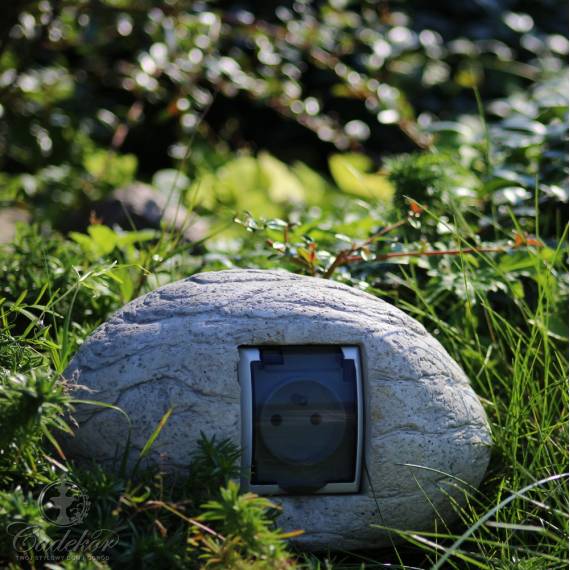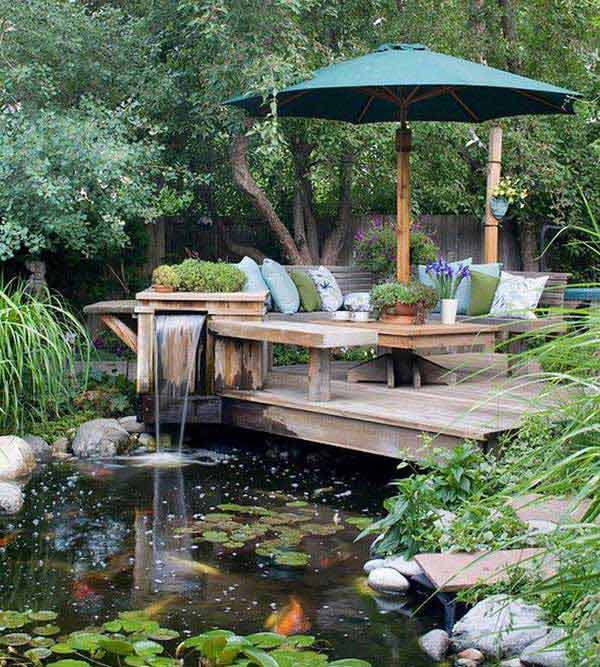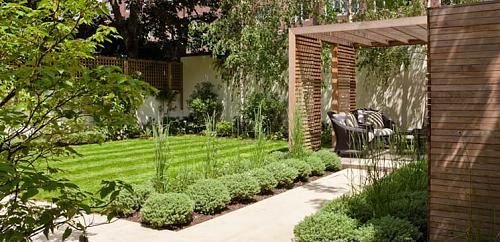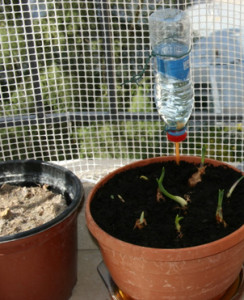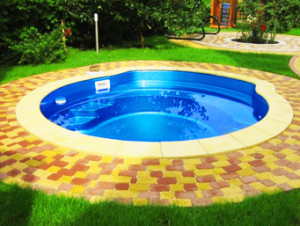 Źródła wody
Źródła wody
Sieć wodociągowa dla większości z nas jest podstawowym źródłem zaopatrzenia w wodę. Nie zawsze jednak jest to źródło najlepsze.
Po pierwsze, w okresach, kiedy występuje największe zapotrzebowanie na wodę w ogrodzie, czyli podczas suszy, lokalne władze często występują z apelem o oszczędność. Podobne wezwania należy traktować z całą powagą. Po drugie, woda z sieci wodociągowej jest bardzo droga, a po trzecie, dostarczana jest pod ciśnieniem, które może być zbyt duże dla automatycznych systemów zraszania. Rodzi to konieczność instalacji dodatkowego zbiornika opadowego. Ciśnienie często ulega znacznym wahaniom. Jeśli w naszej okolicy bywa zbyt niskie, rośliny podlewajmy wczesnym rankiem, zanim sąsiedzi wstaną z łóżek i ruszą do łazienek i kuchni. Duże ogrody z reguły wymagają oddzielnej instalacji wodociągowej, zwłaszcza jeśli znajdują się w nich duże zbiorniki wodne. Jeśli rozważamy montaż automatycznych zraszaczy, sprawdźmy najpierw, jaka jest wydajność sieci. Może się bowiem okazać, że wcześniej będziemy musieli ją zmodernizować.
Woda z sieci wodociągowej sprawia kilka problemów. Chociaż jest czysta i bezpieczna, to jednak jej temperatura jest zwykle bardzo niska. Poza tym zawiera mnóstwo chloru. Dla podlewania zahartowanych roślin uprawianych w gruncie prawdopodobnie nie będzie to problem. Ale już podlewanie taką wodą wrażliwych roślin, które uprawiamy w cieplarni, może być prawdziwym szokiem termicznym. Zanim więc rozpoczniemy podlewanie, wodę musimy ogrzać. Jeśli w cieplarni mamy wystarczająco dużo wolnej przestrzeni, możemy ustawić zbiornik napełniany wodą z sieci. Woda odstała w zbiorniku oczyści się z chloru i ogrzeje. Co więcej, możemy w niej rozpuszczać płynne nawozy.
Węże ogrodowe i krany
W ogrodzie trudno obyć się bez dobrze usytuowanego kranu. Jeśli ogród jest duży, jeden może nam nie wystarczyć. Kupując węża ogrodowego, pamiętajmy, że warto wydać więcej na produkt dobrej jakości. Ib lepsze nie załamują się tak łatwo i są ogólnie bardziej trwałe. Kiedy węża nie używamy, zwińmy go najlepiej i powieśmy na specjalnym uchwycie umocowanym do ściany. Jeśli rośliny często podlewamy, warto zainwestować w rozgałęźniki i końcówki do węża różnego typu.
Mróz
Woda zamarzając, zwiększa swoją objętość, co może powodować pękanie rur i węży. Dlatego instalacja doprowadzająca wodę do budynku znajduje się na głębokości przekraczającej poziom przemarzania gruntu. Jeżeli instalacja ogrodowa położona jest płyciej, musimy zabezpieczyć ją na zimę, spuszczając z rur wodę. Podobnie postępujemy z wężami ogrodowymi, które na okres zimy najlepiej przenieść do szopy. A gdy przez nieuwagę zostawimy na mrozie węża wypełnionego wodą, nie ruszajmy go do czasu, aż woda sama stopnieje. Manipulowanie zamarzniętym wężem może spowodować jego pęknięcie.
Studnie, stawy i rowy
Jeżeli mamy taką możliwość, wodę z sieci wodociągowej możemy uzupełniać wodą ze stawu, studni, rowu lub naturalnego cieku wodnego. Taka woda jest zwykle cieplejsza i pozbawiona chloru. Może być jednak błotnista i zawierać zanieczyszczenia. Z odpowiednio głębokiej własnej studni możemy czerpać chłodną czystą wodę.
W studniach płytkich, zasilanych wodami gruntowymi woda często jest brudna. W każdym razie takiej wodzie, zanim wykorzystamy ją do podlewania roślin wrażliwych lub szklarniowych, pozwalamy odstać i ogrzać się w specjalnie przeznaczonym do tego zbiorniku. Woda ze stawów i rowów jest zazwyczaj cieplejsza, ale bardziej błotnista. Może zawierać zanieczyszczenia i bakterie, dlatego należy korzystać z niej bardzo ostrożnie. Czerpanie wody z wymienionych źródeł umożliwi nam nawet najprostsza pompa wodna.
